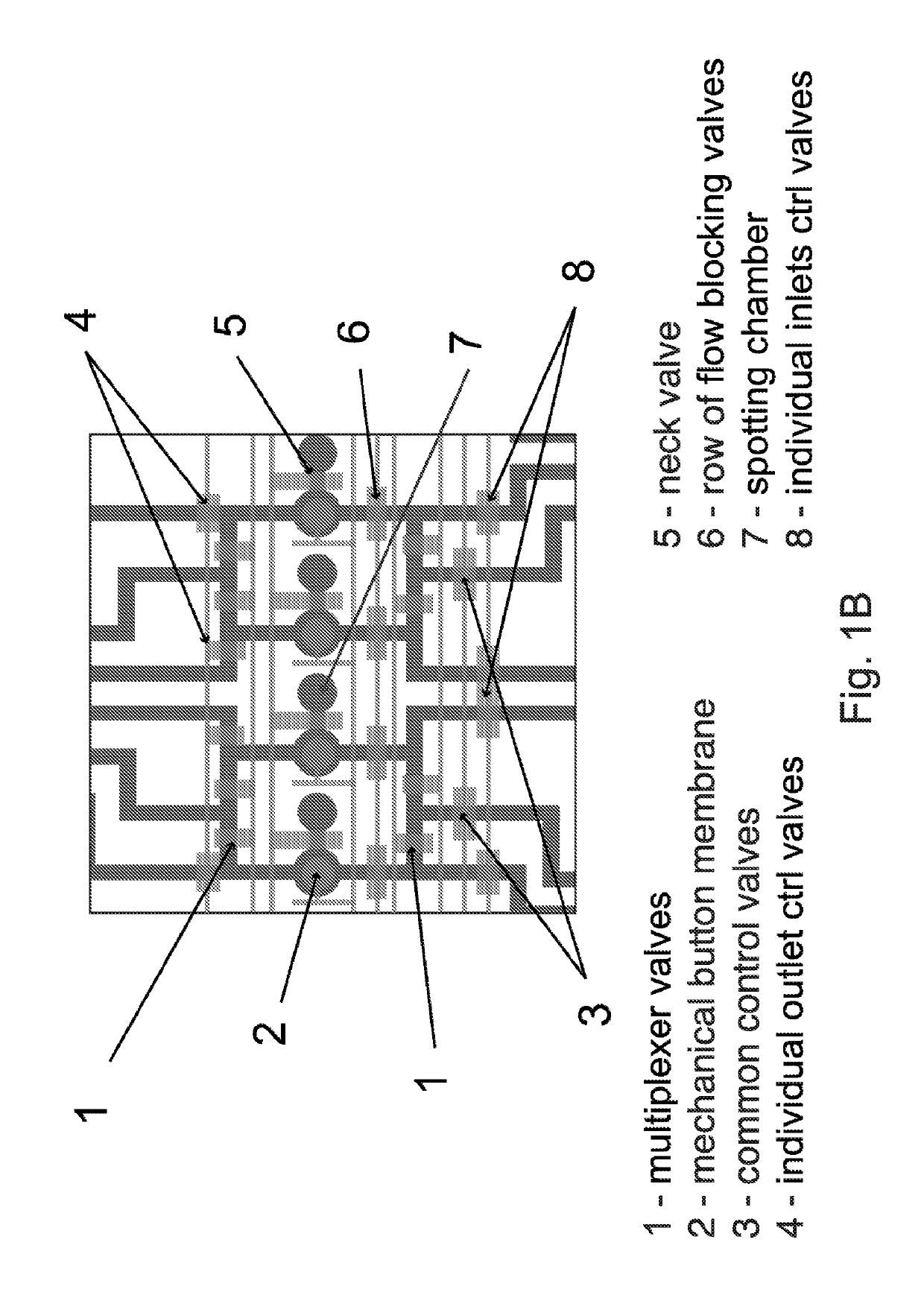Microfluidic Device and Method for Isolation of Nucleic Acid
a microfluidic device and nucleic acid technology, applied in fluid controllers, laboratory glassware, chemistry apparatus and processes, etc., can solve the problems of time and cost investment, unable to detect tf-dna interactions, and no existing techniques, etc., to explore the comprehensive mapping of dna binding specificities of tf heterodimers or even larger complexes, and achieve cost-effective and time-saving effects
- Summary
- Abstract
- Description
- Claims
- Application Information
AI Technical Summary
Benefits of technology
Problems solved by technology
Method used
Image
Examples
Embodiment Construction
MITOMI (Mechanically Induced Trapping of Molecular Interactions) Followed by HT (High Throughput) Sequencing (MITOMI-Seq)
[0047]We first thought of using original MITOMI devices and an established protocol to perform an on-chip selection assay. Initial experiments revealed however that MITOMI devices suffered from a small and uncontrolled carry-over between neighboring units. Such a cross talk between units is typically not a problem for standard MITOMI applications that require a basic fluorescence-based read out. However, if one wants to recover bound DNA material from the device and subsequently analyze it with an extremely sensitive method like HT-sequencing, even small amounts of cross-contamination between samples may possibly skew data interpretation. Therefore there is a need for a device that can perform mechanically induced trapping of interactions but also allows a controlled isolation of individual units to be one of the key components of a successful on-chip selection pr...
PUM
| Property | Measurement | Unit |
|---|---|---|
| Time | aaaaa | aaaaa |
| Interaction | aaaaa | aaaaa |
| Unit cell | aaaaa | aaaaa |
Abstract
Description
Claims
Application Information
 Login to View More
Login to View More - R&D
- Intellectual Property
- Life Sciences
- Materials
- Tech Scout
- Unparalleled Data Quality
- Higher Quality Content
- 60% Fewer Hallucinations
Browse by: Latest US Patents, China's latest patents, Technical Efficacy Thesaurus, Application Domain, Technology Topic, Popular Technical Reports.
© 2025 PatSnap. All rights reserved.Legal|Privacy policy|Modern Slavery Act Transparency Statement|Sitemap|About US| Contact US: help@patsnap.com



